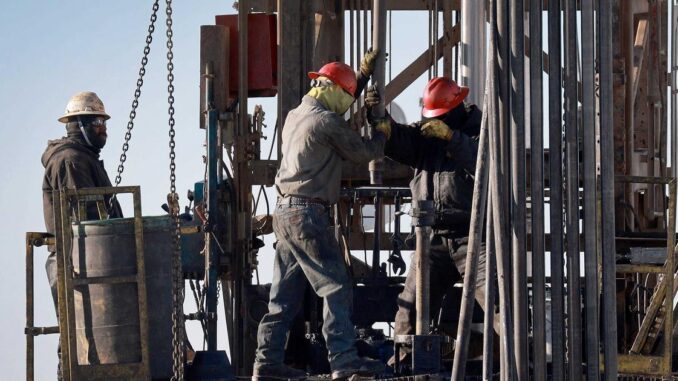
Oil dipped after hot inflation data led traders to anticipate that central bankers are likely to stay hawkish for the coming months, offsetting hopes for higher demand from Asia.West Texas Intermediate dropped below $76.50, reversing earlier reached gains after China and India released strong manufacturing and oil-sales data.
Crude has weakened this year as the prospect of tighter US monetary policy and rising inventories counter optimism that Chinese demand will strengthen following the ending of coronavirus lockdowns in the world’s second-biggest economy.
Russian flows are also in focus as western sanctions and bans linked to the war in Ukraine tighten. Although Moscow has largely managed to keep exports going by finding new buyers, there are signs of friction, including in India, a key outlet for Russian crude.
While Chinese oil demand is likely to rebound along with the economy, there’s the concern that high rates in the US will make the dollar even stronger, weighing on crude prices, said Edward Bell, senior director of market economics at Emirates NBD Bank PJSC.
Prices:
WTI for April delivery fell 0.8% to $76.40 a barrel at 12:40 p.m. in London.
It earlier rose 0.9% to $77.74
Brent for May settlement dropped 0.5% to $82.93 a barrel
The Bloomberg Dollar Spot Index shed 0.7%.
Russia said it planned to cut supply by 500,000 barrels a day from this month, presenting that decision as a retaliation against sanctions. The European Union, however, said Moscow had been forced to cut back, while RBC Capital Markets said the decision may reflect Russia’s difficulty maintaining output from challenging fields.
“The big question for oil markets in coming months will be the extent that Russia’s oil and refined-product exports are upended,” said Vivek Dhar, director of mining and energy commodities research at Commonwealth Bank of Australia. “Markets have generally overestimated the extent of Russian oil supply disruptions since the Ukraine war began.”
In the US, commercial stockpiles have expanded significantly in recent months, signaling ample crude supply. On Tuesday, the American Petroleum Institute reported US inventories rose by 6.2 million barrels last week, according to people familiar with the figures. An official breakdown comes later on Wednesday.
Goldman Sachs Group Inc. has “quite high confidence” that there will be an oil price spike in the next 12—18 months. The bank still sees crude reaching $100 a barrel in the fourth quarter as oil inventories decline and money supply stabilizes, analyst Jeff Currie said in an interview with Bloomberg television in London on Wednesday.
Share This:



